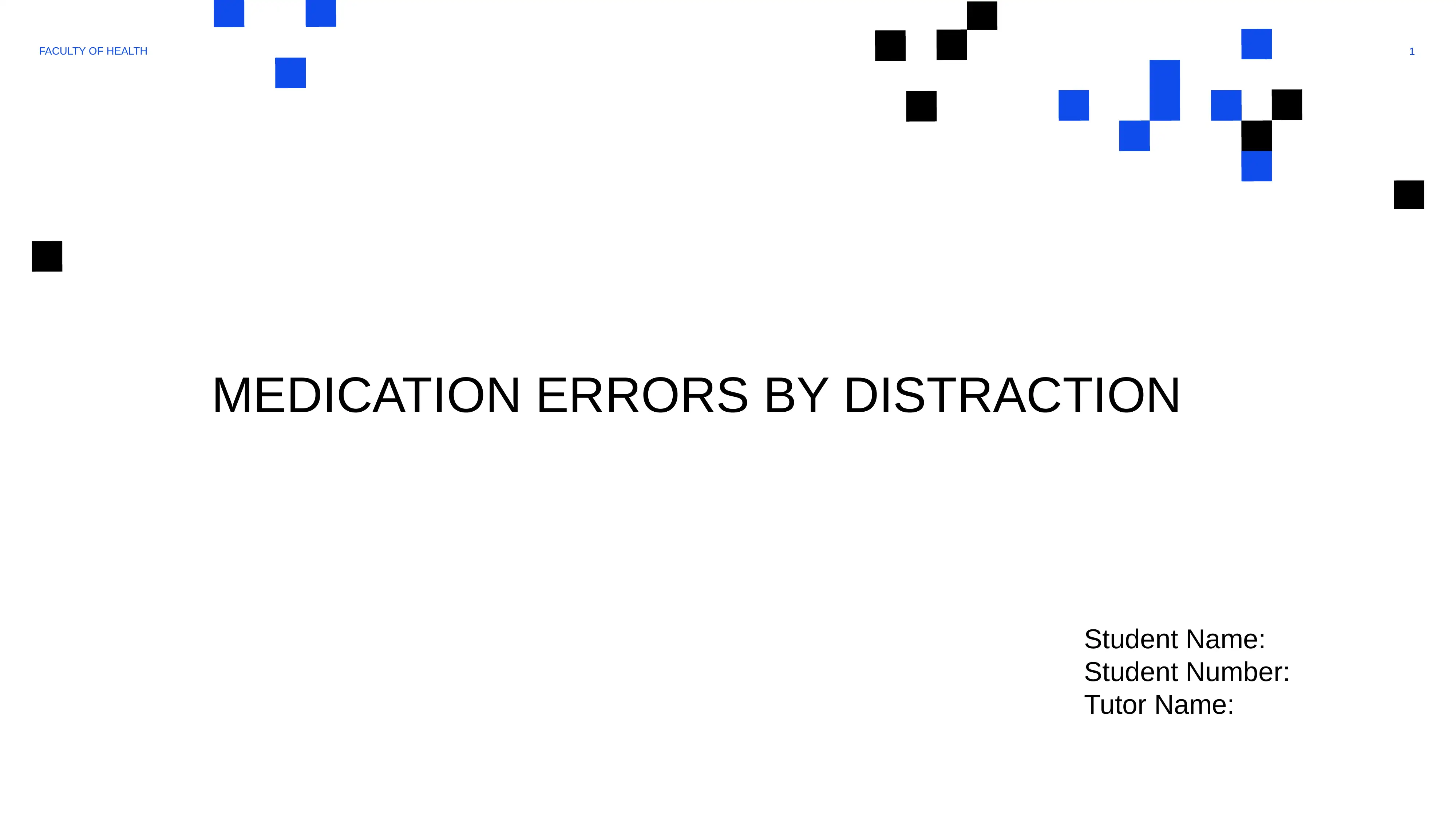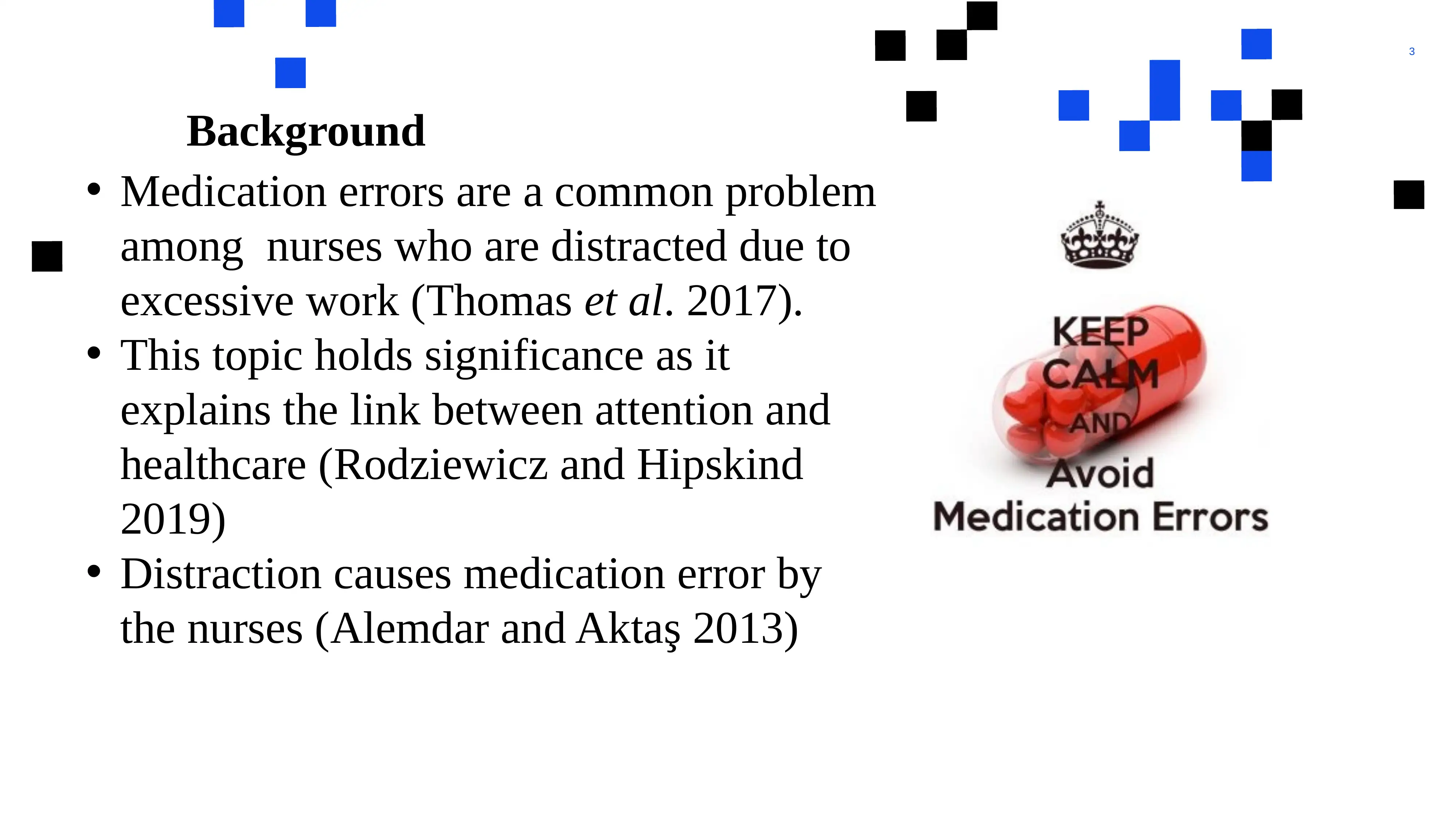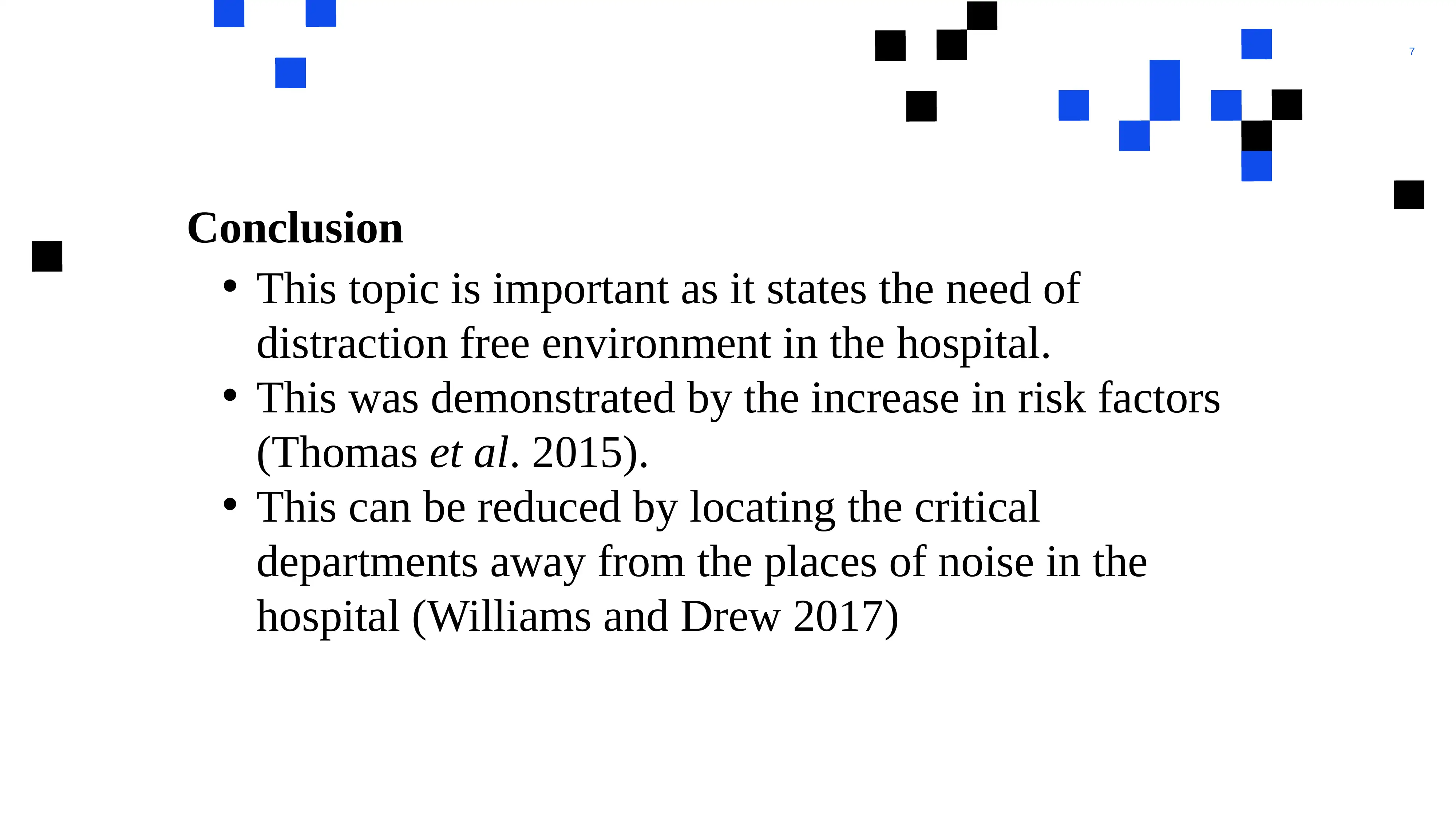Assessment 1: Medication Errors by Distraction in a Medical Unit
VerifiedAdded on 2022/09/28
|10
|734
|22
Presentation
AI Summary
This presentation explores the critical issue of medication errors caused by distractions in healthcare settings. The overview highlights the significance of this problem, emphasizing how distractions, such as noise and interruptions, can lead to adverse patient outcomes. The presentation delves into the background, explaining the link between attention and patient safety, and the objectives, which focus on educating healthcare staff about these risks and implementing strategies to minimize distractions. The outline covers the impact of interruptions, the clinical environment, and the effects on nurses, including their efficacy and professionalism. The conclusion stresses the importance of a distraction-free environment, supported by research findings. The presentation includes references to relevant literature and underscores the need for proactive measures to reduce medication errors and enhance patient safety through a comprehensive understanding of the factors contributing to distraction and its consequences.
1 out of 10














![[object Object]](/_next/static/media/star-bottom.7253800d.svg)